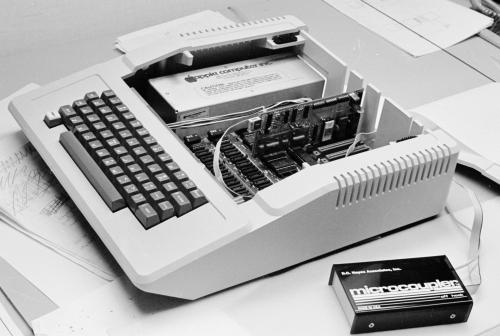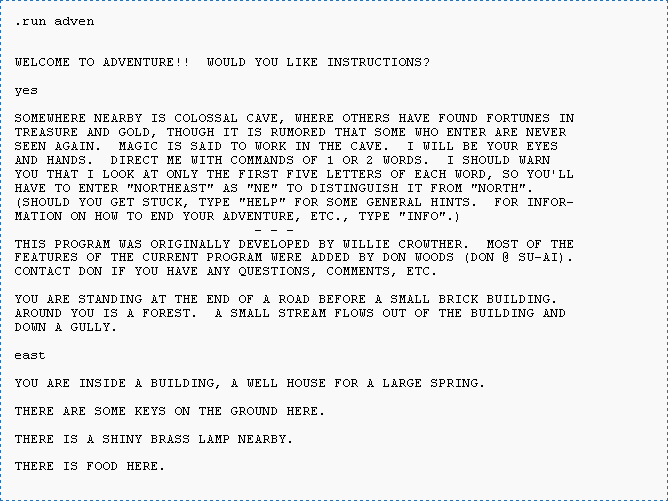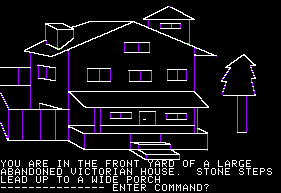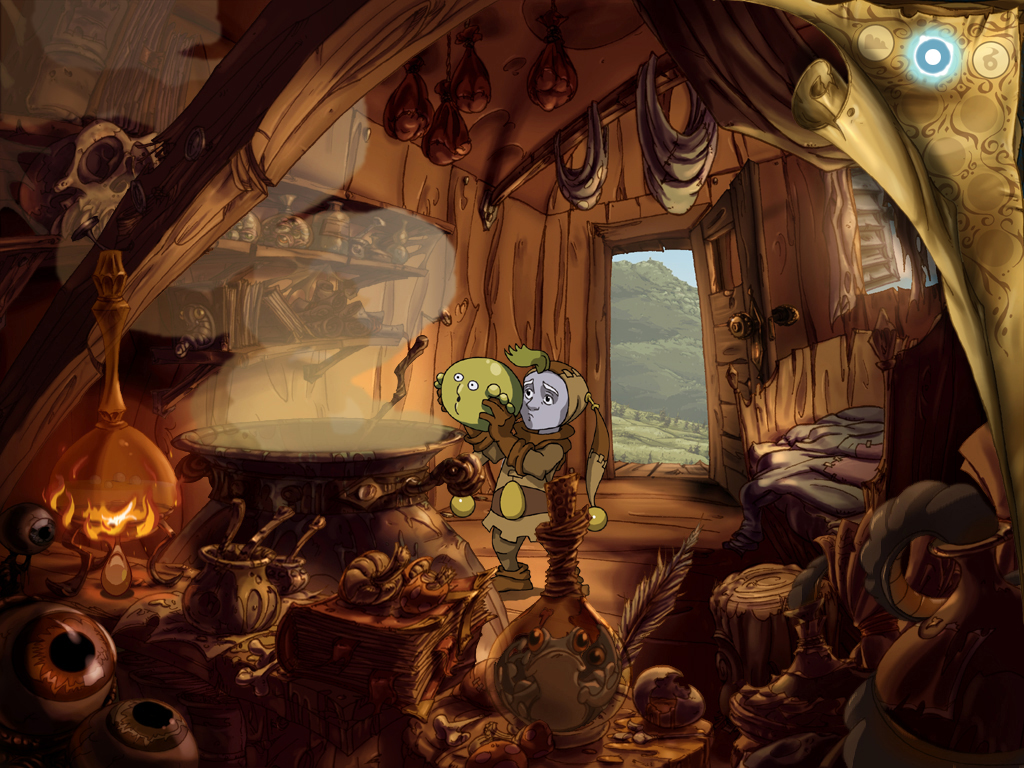|
The Demon's Forge
''The Demon's Forge'' is a 1981 adventure video game published by Saber Software for the Apple II and IBM PC, designed by Brian Fargo. As well as being Brian Fargo's seminal work, The Demon's Forge is an early example of graphic adventure, contrary to the more commonplace text-based adventure games of the previous decade, also released briefly after 1980's Mystery House. Gameplay ''The Demon's Forge'' is a game in which the player is a mercenary banished to a dungeon. In this game, players navigate through a fantasy world filled with danger and puzzles. The goal is to explore dungeons, solve mysteries, and ultimately confront the demonic forces lurking within. The game's interface relies heavily on text commands, where players type out actions and responses to interact with the game world. Through this approach, players uncover a rich narrative and encounter various challenges, from battling monsters to deciphering cryptic clues. Fargo's design emphasizes immersive storytelling ... [...More Info...] [...Related Items...] OR: [Wikipedia] [Google] [Baidu] |
Adventure Game
An adventure game is a video game genre in which the player assumes the role of a protagonist in an interactive story driven by exploration and/or puzzle-solving. The genre's focus on story allows it to draw heavily from other narrative-based media, literature and film, encompassing a wide variety of literary genres. Many adventure games ( text and graphic) are designed for a single player, since this emphasis on story and character makes multiplayer design difficult. '' Colossal Cave Adventure'' is identified as the first such adventure game, first released in 1976, while other notable adventure game series include '' Zork'', '' King's Quest'', '' Monkey Island'', and '' Myst''. Initial adventure games developed in the 1970s and early 1980s were text-based, using text parsers to translate the player's input into commands. As personal computers became more powerful with better graphics, the graphic adventure-game format became popular, initially by augmenting player's text comm ... [...More Info...] [...Related Items...] OR: [Wikipedia] [Google] [Baidu] |
Apple II
The Apple II (stylized as ) is an 8-bit home computer and one of the world's first highly successful mass-produced microcomputer products. It was designed primarily by Steve Wozniak; Jerry Manock developed the design of Apple II's foam-molded plastic case, Rod Holt developed the switching power supply, while Steve Jobs's role in the design of the computer was limited to overseeing Jerry Manock's work on the plastic case. It was introduced by Jobs and Wozniak at the 1977 West Coast Computer Faire, and marks Apple's first launch of a personal computer aimed at a consumer market—branded toward American households rather than businessmen or computer hobbyists. ''Byte'' magazine referred to the Apple II, Commodore PET 2001, and TRS-80 as the "1977 Trinity". As the Apple II had the defining feature of being able to display color graphics, the Apple logo was redesigned to have a spectrum of colors. The Apple II is the first model in the Apple II series, followed by App ... [...More Info...] [...Related Items...] OR: [Wikipedia] [Google] [Baidu] |
IBM Personal Computer
The IBM Personal Computer (model 5150, commonly known as the IBM PC) is the first microcomputer released in the IBM PC model line and the basis for the IBM PC compatible de facto standard. Released on August 12, 1981, it was created by a team of engineers and designers directed by Don Estridge in Boca Raton, Florida. The machine was based on open architecture and third-party peripherals. Over time, expansion cards and software technology increased to support it. The PC had a substantial influence on the personal computer market. The specifications of the IBM PC became one of the most popular computer design standards in the world. The only significant competition it faced from a non-compatible platform throughout the 1980s was from the Apple Macintosh product line. The majority of modern personal computers are distant descendants of the IBM PC. History Prior to the 1980s, IBM had largely been known as a provider of business computer systems. As the 1980s opened, th ... [...More Info...] [...Related Items...] OR: [Wikipedia] [Google] [Baidu] |
Brian Fargo
Frank Brian Fargo (born December 15, 1962) is an American video game designer, producer, programmer and executive, and founder of Interplay Entertainment, inXile Entertainment and Robot Cache. Biography Early life A descendant of the family that created the banking giants Wells Fargo and American Express, Fargo was born in Long Beach, California, and grew up in Whittier and Newport Beach. The only child of Frank Byron Fargo and Marie Curtis Fargo, he attended Corona del Mar High School, where he participated in track and field and developed a desire to create video games after his parents bought him an Apple II computer in 1977. Brian Fargo wrote his first video game, ''Labyrinth of Martagon'', with his friend Michael Cranford while still in high school. The team's first widely distributed game was the graphical text adventure ''The Demon's Forge'', which Brian self-published and guerilla marketed in 1981 (and was later re-released by Boone Corporation). In 1982, '' ... [...More Info...] [...Related Items...] OR: [Wikipedia] [Google] [Baidu] |
Interactive Fiction
'' Interactive fiction, often abbreviated IF, is software simulating environments in which players use text commands to control characters and influence the environment. Works in this form can be understood as literary narratives, either in the form of interactive narratives or interactive narrations. These works can also be understood as a form of video game, either in the form of an adventure game or role-playing game. In common usage, the term refers to text adventures, a type of adventure game where the entire interface can be "text-only", however, graphical text adventures still fall under the text adventure category if the main way to interact with the game is by typing text. Some users of the term distinguish between interactive fiction, known as "Puzzle-free", that focuses on narrative, and "text adventures" that focus on puzzles. Due to their text-only nature, they sidestepped the problem of writing for widely divergent graphics architectures. This feature meant that in ... [...More Info...] [...Related Items...] OR: [Wikipedia] [Google] [Baidu] |
Mystery House
''Mystery House'' is an adventure game released by On-Line Systems in 1980. It was designed, written and illustrated by Roberta Williams, and programmed by Ken Williams for the Apple II. ''Mystery House'' is the first graphical adventure game and the first game produced by On-Line Systems, the company which would evolve into Sierra On-Line. It is one of the earliest horror video games. Plot The game starts near an abandoned Victorian mansion. The player is soon locked inside the house with no other option than to explore. The mansion contains many interesting rooms and seven other people: Tom, a plumber; Sam, a mechanic; Sally, a seamstress; Dr. Green, a surgeon; Joe, a grave-digger; Bill, a butcher; Daisy, a cook. Initially, the player has to search the house in order to find a hidden cache of jewels. Soon, dead bodies (of the other people) begin appearing and it is obvious there's a murderer on the loose in the house. The player must discover who it is or become the ne ... [...More Info...] [...Related Items...] OR: [Wikipedia] [Google] [Baidu] |
Mastertronic
Mastertronic was originally a publisher and distributor of low-cost computer game software founded in 1983. Their first games were distributed in mid-1984. At its peak the label was one of the largest software publishers in the UK, achieved by selling cassette-based software at £1.99. As well as supplying leading retailers such as Woolworth's and Toys "R" Us, Mastertronic sold software in outlets such as newsagents which had not been previously associated with the software market. Their range of budget games were incredibly successful during the 1980's, with titles such as '' Kikstart'', ''Action Biker'', ''Finders Keepers'', ''Chiller'' and ''Flash Gordon'' (released under the M.A.D. Label). Later diversification included the setting up of US operations to source and distribute their software, as well as an unsuccessful arcade games division (Arcadia Systems). However, it was their decision to market the Sega Master System in the UK that ultimately proved most successful. I ... [...More Info...] [...Related Items...] OR: [Wikipedia] [Google] [Baidu] |
Computer Gaming World
''Computer Gaming World'' (CGW) was an American computer game magazine published between 1981 and 2006. One of the few magazines of the era to survive the video game crash of 1983, it was sold to Ziff Davis in 1993. It expanded greatly through the 1990s and became one of the largest dedicated video game magazines, reaching around 500 pages by 1997. In the early 2000s its circulation was about 300,000, only slightly behind the market leader '' PC Gamer''. But, like most magazines of the era, the rapid move of its advertising revenue to internet properties led to a decline in revenue. In 2006, Ziff announced it would be refocused as ''Games for Windows'', before moving it to solely online format, and then shutting down completely later the same year. History In 1979, Russell Sipe left the Southern Baptist Convention ministry. A fan of computer games, he realized in spring 1981 that no magazine was dedicated to computer games. Although Sipe had no publishing experience, he formed ... [...More Info...] [...Related Items...] OR: [Wikipedia] [Google] [Baidu] |
Softline (magazine)
''Softalk'' () was an American magazine of the early 1980s that focused on the Apple II computer. Published from September 1980 through August 1984, it featured articles about hardware and software associated with the Apple II platform and the people and companies who made them. The name was originally used on a newsletter of Apple Software pioneer company, Softape, who in 1980 changed its name to Artsci Inc. The startup capital for ''Softalk'' came from Margot Comstock, who had won on the television game show ''Password,'' along with a generous contribution after a few months from John Haller and from Comstock and Al Tommervik's second mortgage on their house. Partners William V R Smith III, William Depew contributed early office space in their Softape storeroom and arrived unexpectedly with office desks when Softalk moved into its own location. Unlike other computer magazines that generally focused on a specific, narrow subject matter or market segment (e.g., business applic ... [...More Info...] [...Related Items...] OR: [Wikipedia] [Google] [Baidu] |
1981 Video Games
Events January * January 1 ** Greece enters the European Economic Community, predecessor of the European Union. ** Palau becomes a self-governing territory. * January 10 – Salvadoran Civil War: The FMLN launches its first major offensive, gaining control of most of Morazán and Chalatenango departments. * January 15 – Pope John Paul II receives a delegation led by Polish Solidarity leader Lech Wałęsa at the Vatican. * January 20 – Iran releases the 52 Americans held for 444 days, minutes after Ronald Reagan is sworn in as the 40th President of the United States, ending the Iran hostage crisis. * January 21 – The first DeLorean automobile, a stainless steel sports car with gull-wing doors, rolls off the production line in Dunmurry, Northern Ireland. * January 24 – An earthquake of magnitude in Sichuan, China, kills 150 people. Japan suffers a less serious earthquake on the same day. * January 25 – In South Africa the largest part of the tow ... [...More Info...] [...Related Items...] OR: [Wikipedia] [Google] [Baidu] |
Adventure Games
An adventure game is a video game genre in which the player assumes the role of a protagonist in an interactive story driven by exploration and/or puzzle-solving. The genre's focus on story allows it to draw heavily from other narrative-based media, literature and film, encompassing a wide variety of literary genres. Many adventure games ( text and graphic) are designed for a single player, since this emphasis on story and character makes multiplayer design difficult. '' Colossal Cave Adventure'' is identified as the first such adventure game, first released in 1976, while other notable adventure game series include '' Zork'', '' King's Quest'', '' Monkey Island'', and '' Myst''. Initial adventure games developed in the 1970s and early 1980s were text-based, using text parsers to translate the player's input into commands. As personal computers became more powerful with better graphics, the graphic adventure-game format became popular, initially by augmenting player's text comm ... [...More Info...] [...Related Items...] OR: [Wikipedia] [Google] [Baidu] |





.jpg)

